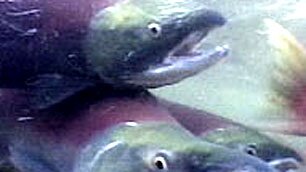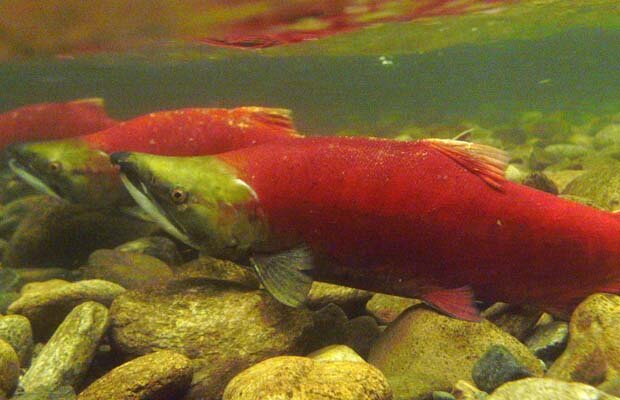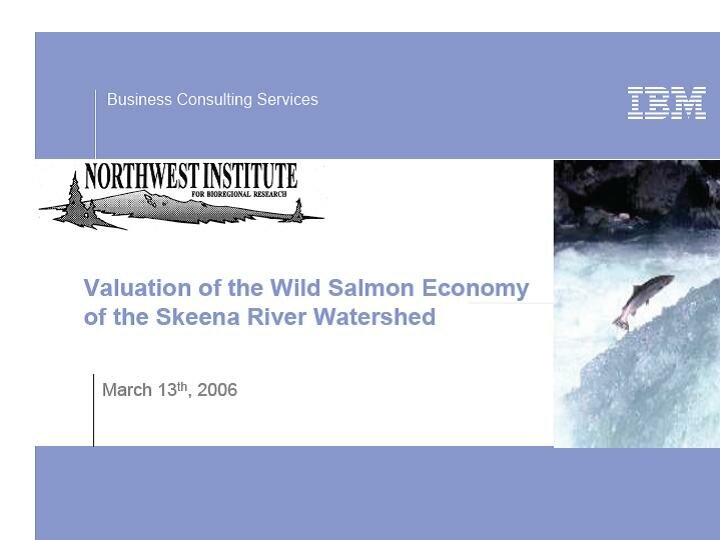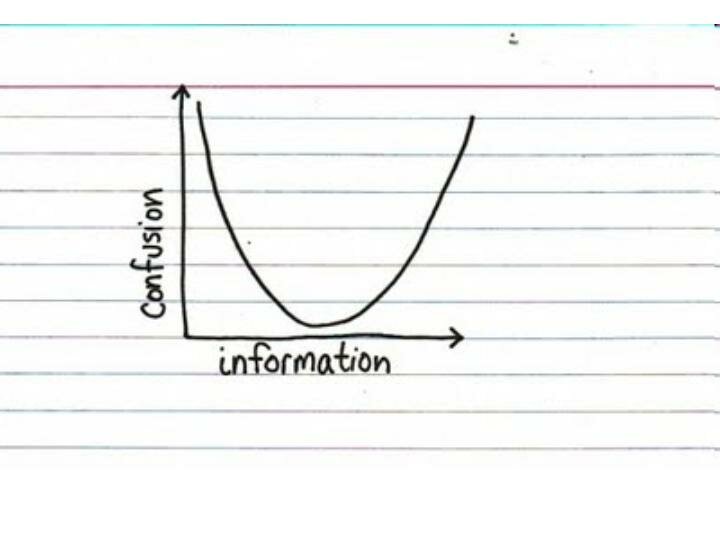Are your salmon depressed?
Here’s the solution… just put them in the nearest city wastewater stream.
There, they will get a good dose of prozac, cialis/viagara, and estrogen from birth control pills.
CBC reported in January:
A significant amount of antidepressant medicine exists in Montreal’s waste water, affecting fish tissue and brain activity, a study by the University of Montreal’s chemistry department has found.
The study says the phenomenon likely occurs in many cities around the world because Montreal has a typical sewage-treatment system.
The controlled study involved brook trout exposed to varying amounts of effluent Montreal water over a three-month period.
…
“We have data that does show that antidepressant drugs do accumulate in fish tissues — there’s significantly more in the liver than in the muscle, but there’s also more in the brain tissues,” [Dr.] Sauvé [main researcher] told The Canadian Press.
“[The brain] is a bit more of a cause for concern because we have a molecule that’s known and used for brain alteration functions in humans, so if we do have an accumulation in fish brain, it raises a question of what the impact is on the fish.”
And so now at least Montreal has happy, erect, non-reproducing fish swimming around in the St. Lawrence…
Jest aside… this is no small potato issue. One thing that struck me… the study estimates that one in four folks in Quebec are on Prozac-like medication. Yowsers.
The CBC report turns quickly to the human fear-factor issue… “oh my god, what if I eat the fish?”.
Not a big issue.
But what if you’re a depressed salmon in the Fraser River — like a sockeye?
Well… flush it out of sight, flush it out of mind.
_ _ _ _ _
At last summer’s Fraser Sockeye Summit hosted by SFU, Ken Ashley an instructor at the BC Institute of Technology (BCIT) reported on this issue.
His report is also summarized in the proceedings from the Summit:
Emerging concerns about wastewater
There is an emerging concern about wastewater and the array of chemicals that are being produced by society and usually end up going down the drain. Endocrine disruptors are of particular concern, and there is a large range of these compounds; for example, the compound Bisphenol A which led to a debate over plastic water bottles and the banning by Health Canada for some baby bottles.Another endocrine disruptor is Triclosan, a thyroid hormone mimicker that acts as an antibacterial agent. PCBs (polychlorinated biphenols), POPs (persistent organic pollutants) and fire retardants such as PBDEs (polybrominated diphenyl ethers) are other compounds of concern.
Numerous pharmaceuticals, such as Viagra and Prozac that are also found in wastewater. The latest compounds of concern are nanoparticles, such as nanocarbon, nanotitanium and nanosilver. Nanosilver is now used by some washing machines to disinfect clothing (silver has been known since the Middle Ages to have antimicrobial activity). All of these compounds usually end up in the drain being discharged into either the marine or freshwater environment.
…
The question is: how effective are wastewater treatment plants at keeping these compounds out of marine and freshwater environments? The answer is that they are not…
_ _ _ _ _ _
Effects of effluent on salmon migration
Recent research has show that incidents of sex‐reversal in salmonids have been observed in the effluent plume. The presence of EDCs [endocrine disrupting compounds — the things that mess with our most ancient internal systems, like the immune system, etc.] may also interfere with the typical olfactory imprinting process during early life cycle development stages in salmon.
There is a period when the smolts go through the parr‐smolt transformation, where the thyroxin hormone levels become elevated in the blood. It is known that juvenile salmon detect the unique odour of their natal streams; this phenomenon is referred to as olfactory imprinting, and this is how salmon migrate to their natal stream once they return into the freshwater environment (in the open marine migration they are guided by magnetic compass and sun height). Evidence suggests that juvenile salmon ‘imprint’ odours of the streams on the way to the ocean during the parr‐smolt transformation period.
Elevated thyroxin levels stimulate neural development of the olfactory cells, and this facilitates olfactory imprinting. However, this process may be interrupted when the smolts move through effluent plumes containing Trislocan and other EDCs.
Ashley also goes on to point out the issues around PCBs and PCBEs:
PCB and PBDE trends in Strait of Georgia
Research has been conducted under the direction of scientists at the Institute of Ocean Science where sediment cores were obtained from the Strait of Georgia and examined for organochlorines, PCBs and PBDEs among other compounds. The presence of PBDEs is universal; for example, they are in your furniture cushions and in computer cases.
On a side note to the presentation:
The orca found dead on the Olympic Peninsula earlier this year carried a level of contaminants that was among the highest if not the highest ever measured in killer whales, laboratory tests show the 22 foot long female orca was so full of polychlorinated biphenyls that when scientists first attempted to test her fat, the result was too high for the machines to read it.
[the carcass of this whale basically had to be disposed of like toxic waste]
There are ongoing issues and concerns surrounding the health of Fraser Chinook which comprise a significant part of the SARA-listed (Species At Risk Act) resident orcas in the Salish Sea.
After his presentation Ashley answered a question with this info on what needed to be done in the City of Vancouver and Fraser Valley area:
It all comes down to dollars and the issue right now is that the Iona plant is outdated and needs to be rebuilt and it will cost about $1 billion. The Lions Gate plant is out of date, it is a fish killer, and to upgrade it will be about $0.5 billion. Annacis, Lulu and Northwest Langley plants all need significant midlife upgrades. If you add it all together, the cost is about $1.75 billion.
The issue is that Metro is currently following a funding model where they want to pay everything off in a 15‐year amortization period. This has gone to the finance committee twice and the liquid waste management panel has suggested that instead it be spread over 30 or 35 years. These are multigenerational facilities that will be here for a long time.
…in order to enable politicians to do their job this time at the local government level, you need to talk to your city councilor or mayor who is on the Metro Vancouver wastewater management committee and tell them to adopt a 35‐year amortization period and rebuild all of these starting at the same time and with the best available technology. If they get hung up on the 15‐year amortization period, they will drag the upgrade out for 20 or 30 years.
Certainly could leave one wondering where the almighty Department of Fisheries and Oceans is on these issues? As they are supposed to protect salmon, and orcas and marine resources and so on, and so on…

 Labor is not just a meaningful experience – it’s also a marketable one. When instant cake mixes were introduced, in the1950s, housewives were initially resistant: The mixes were too easy, suggesting that their labor was undervalued. When manufacturers changed the recipe to require the addition of an egg, adoption rose dramatically. Ironically, increasing the labor involved – making the task more arduous – led to greater liking.
Labor is not just a meaningful experience – it’s also a marketable one. When instant cake mixes were introduced, in the1950s, housewives were initially resistant: The mixes were too easy, suggesting that their labor was undervalued. When manufacturers changed the recipe to require the addition of an egg, adoption rose dramatically. Ironically, increasing the labor involved – making the task more arduous – led to greater liking.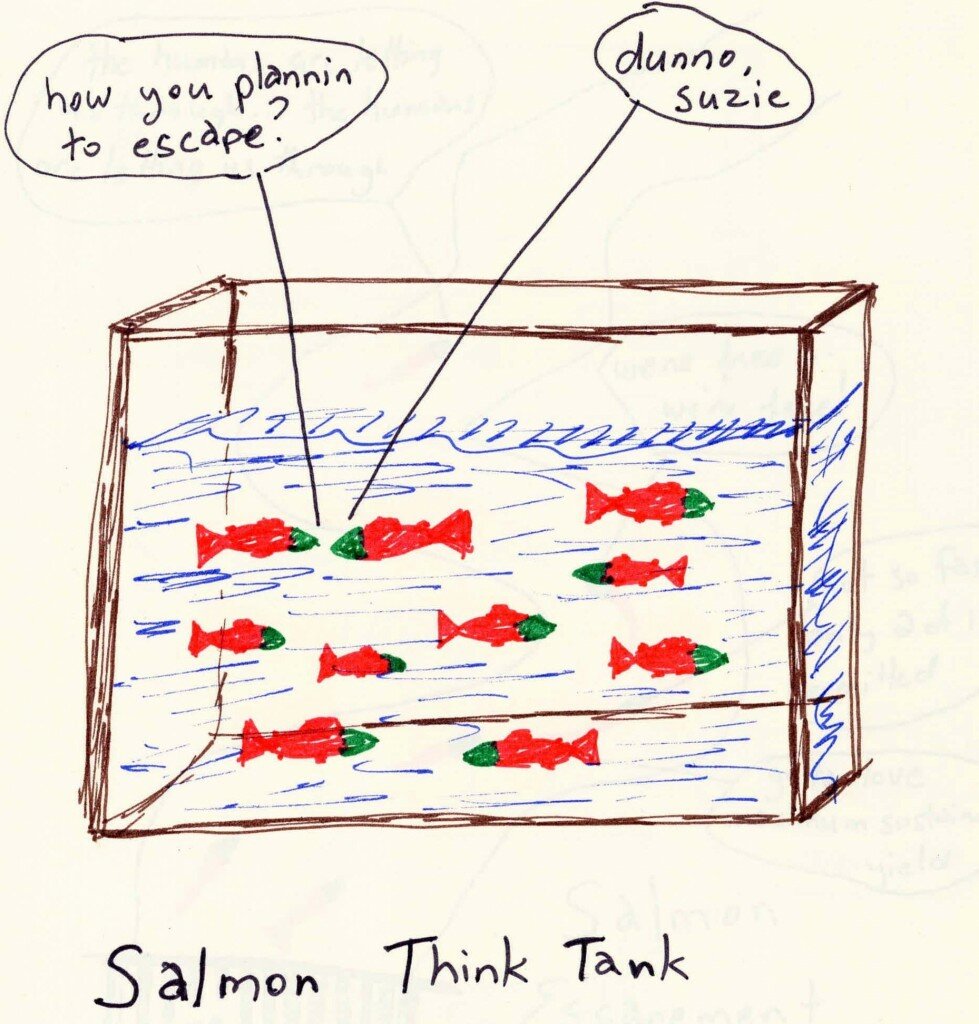
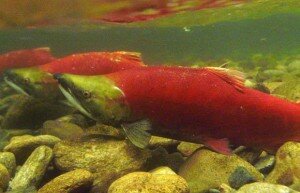
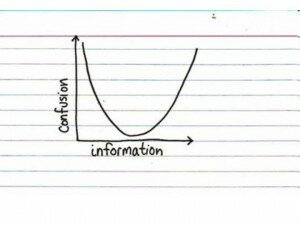

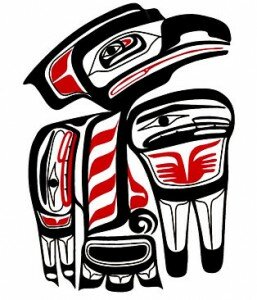
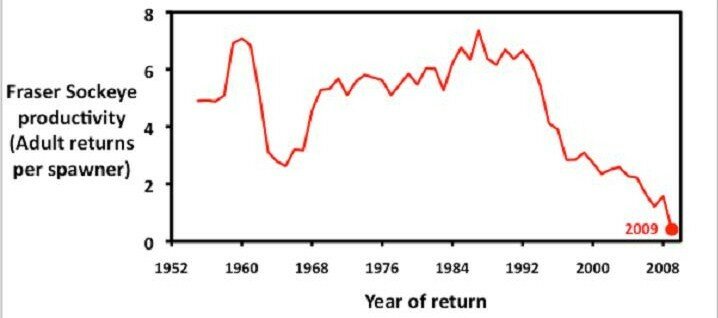
 This graph is showing sockeye salmon production in the Fraser. The steep red line running to the right hand bottom corner is worse than the steep red line to the bottom right corner of most of the world’s stock markets this time last year, or returns on most people’s RRSP.
This graph is showing sockeye salmon production in the Fraser. The steep red line running to the right hand bottom corner is worse than the steep red line to the bottom right corner of most of the world’s stock markets this time last year, or returns on most people’s RRSP.
